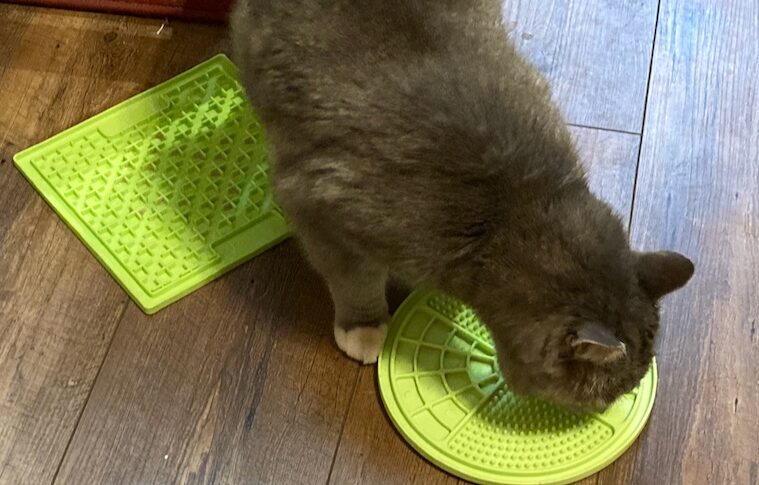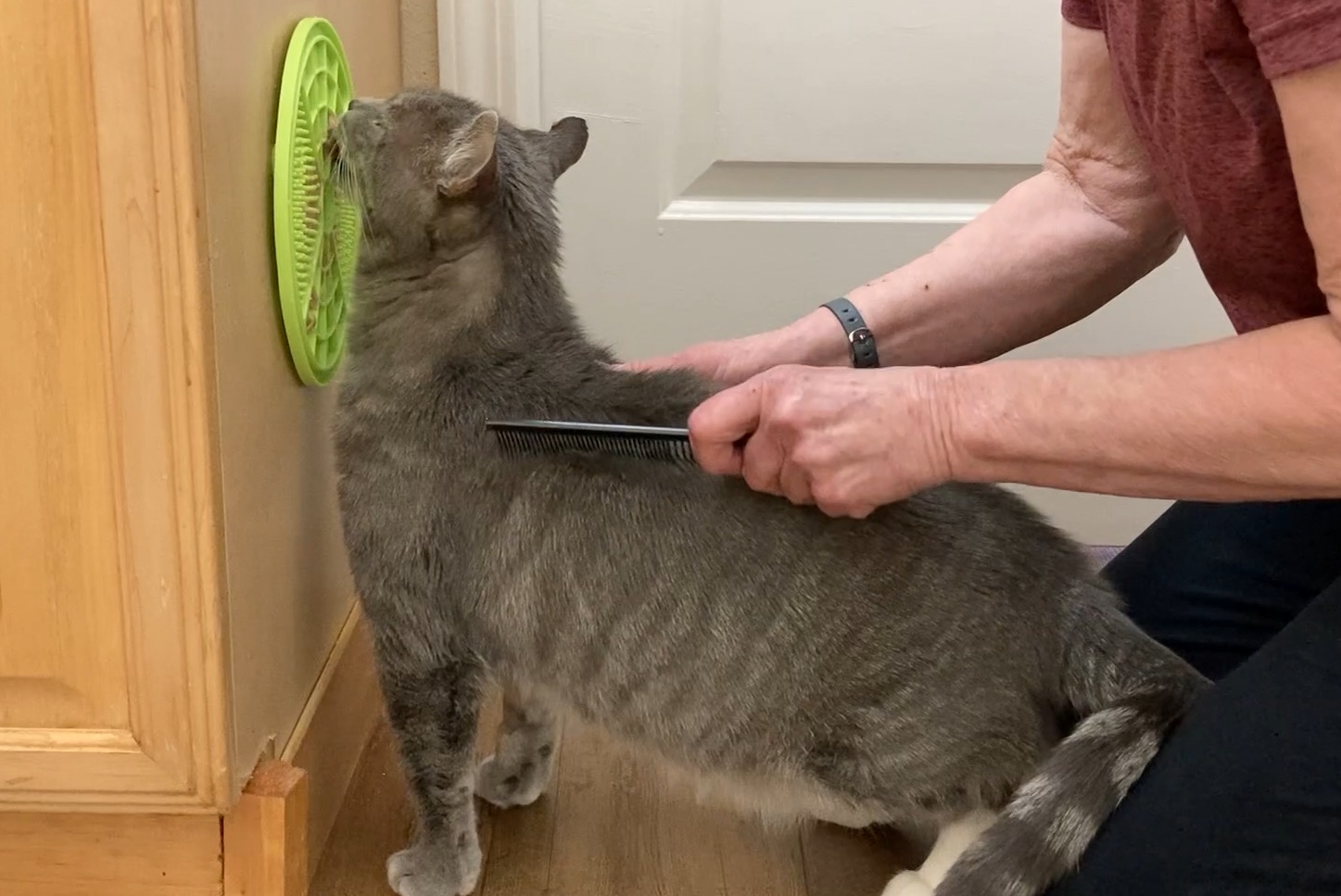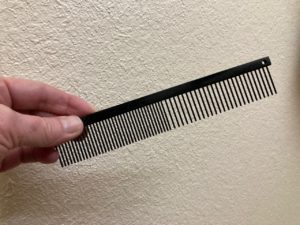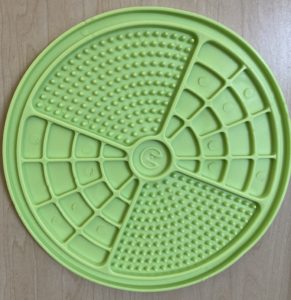
As you are en route to the bathroom during the night, your foot contacts something tubular and mushy – another hairball! I have lived with over a dozen cats – some I have shaved to reduce the hairball menace; others I have dutifully given the hairball gels, which promise to lubricate the cat’s GI (gastrointestinal) tract to help the hairball pass. But, are hairballs normal, part of something you have to put up with when owning a cat?
Hairballs are rare to non-existent in feral cats and zoo cats. Why do our domestic cats get hairballs? Hair that is ingested during normal grooming activities passes out the intestines in the stool. On average, a short‐haired cat loses about 28 g of hair per kg of body weight each year. Two‐thirds of this hair consumed while grooming is found in the stool (Reference 1). The more the cat grooms herself, the more hair she consumes. Couple this with slower gastric emptying, hair can accumulate in the stomach, forming a hairball. Here are the “why’s” and “how’s” of managing hairballs in cats.
managing hairballs in cats
If a hairball becomes too large to pass through the GI tract, the cat usually expels the hairball by vomiting. However, if vomiting is not successful, we risk (Reference 2)
- intestinal obstruction
- obstruction of the esophagus
- hair lodging in the nasopharynx (top part of the throat throat just behind the nose) causing sneezing, retching, and nasal discharge
How Common Are Hairballs in Cats? (Reference 2)
- 73% of cats have never had a hairball
- 17% cats bring up a hairball once a year
- 10% bring up two or more hairballs in a year
- Long-haired cats are twice as likely to vomit hairballs than short-haired cats
When Do We See (or Step on) Hairballs?
- Flea infestations can lead to increased grooming
- GI motility is decreased due to food intolerance or gastrointestinal disease
- The cat is “over-grooming” due to anxiety
What to Do About Hairballs
Chronic gastrointestinal disease, pain, and/or stress can change how fast hair and food move through the GI tract. Your first stop should be your veterinarian’s office. Appropriate management of GI disease can significantly reduce hairball vomiting (Reference 2). Your vet will consider dietary therapy and run diagnostics to detect GI disease.
Diet and Hairballs
Diet may be helpful in managing hairballs in cats. Studies have found that diets containing moderate levels of fiber (11-15% total dietary fiber) can minimize hairball formation, particularly in long-haired cats. Fiber aids in increasing the amount of hair passed out in the stool (Reference 1).
Hairball diets also have larger sized kibbles. Radiographic studies have linked larger kibbles with hairballs exiting the stomach and passing out in the feces (References 1, 2).
Consider feeding more canned food. Canned food passes through the GI tract more quickly (about 4 hours) compared to dry kibble (14-16 hours) (Reference 2).
The following strategies may help reduce the amount of hair ingested and promote GI motility (Reference 2).
- daily grooming to reduce loose hair
- shaving long-haired cats
- monthly flea prevention
- increase gastric emptying by feeding frequent small meals rather than large meals
- use petroleum-based laxatives to lubricate the intestinal tract easing the passage of hairballs
- prokinetic drugs (metoclopramide, cisapride, ranitidine) promote GI motility
hairballs in cats: environmental modification
The GI tract is very responsive to psychological stress. Stress, chronic GI disease, and pain are factors that can affect how fast ingesta are processed by the GI system (Reference 3).
Domestic cats spend 25-30% of their waking hours grooming; those kept solely indoors may spend even more time at this task. Grooming may increase when the cat is stressed or bored.
Enironmental modification gives us a way to reallocate the cat’s time budget – giving him/her other activities to do, in addition to grooming. It also helps us reduce the stress perceived by the cat. In addition to providing the requirements for a healthy feline environment, the following strategies can affect the feline time budget.
- feeding frequent small meals (may also help with gastric emptying)
- incorporating species specific behaviors in feeding strategies (Why Meal Feed Your Cat)
- providing outdoor access in an enclosure or on a harness and leash
- regular interactive play time
- establish a routine; allow the cat control over his environment by knowing what will happen and when
Grooming is a self-soothing behavior. The use of lick mats (textured silicone mats that you spread food on) can take advantage of the satisfaction cats find in licking without hair ingestion.
Although hairballs may seem to be a nuisance behavior, frequent vomiting of hair balls is NOT normal and can be an indicator of underlying GI disease or stress. A visit to your vet can diagnose medical problems; implementing environmental modification can reduce stress that affects how much cats groom and how fast hair moves through the GI tract.
references
- Weber M, Sams L, Feugier A, Michel S, Biourge V. Influence of the dietary fibre levels on faecal hair excretion after 14 days in short and long-haired domestic cats. Vet Med Sci. 2015 Jul 7;1(1):30-37. doi: 10.1002/vms3.6. PMID: 29067172; PMCID: PMC5645811.
- Cannon M. Hairballs in cats: a normal nuisance or a sign that something is wrong? J Feline Med Surg. 2013 Jan;15(1):21-9. doi: 10.1177/1098612X12470342. PMID: 23254238.
- Rudinsky, Adam https://www.youtube.com/live/CkZsUYhswGk?si=dauNUIjuEBGtSvIx October 4, 2022: YouTube Live: Chronic Vomiting Cats: What Can We Do? Viewed 1-17-24
Want to keep up with the world of cats? Subscribe to The Feline Purrspective!




